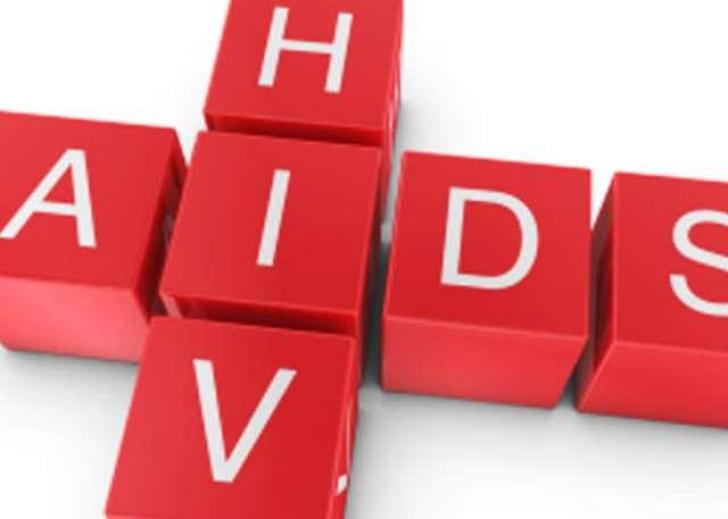News / National
Midlands grapples high rates of mother-to-child HIV transmission
20 hrs ago | Views

The Midlands Province continues to record higher-than-average cases of HIV transmission from mothers to their babies, despite extensive national efforts to eliminate new pediatric infections, officials have revealed.
Speaking at a recent media sensitisation workshop in Kwekwe on HIV, drug abuse, and disaster preparedness, Midlands National Aids Council (NAC) Provincial Manager Mr Mambewu Shumba said the province's mother-to-child transmission (MTCT) rate currently stands at 0.7 percent, slightly above the national average of 0.5 percent.
"Zimbabwe has made remarkable progress in reducing MTCT rates - from 30 percent in 2005 to 0.5 percent nationally today. But it is concerning that Midlands remains above the national target," said Mr Shumba.
Mother-to-child transmission of HIV, also known as vertical transmission, typically occurs during pregnancy, childbirth, or breastfeeding. However, the risk can be drastically reduced through early detection, antiretroviral therapy (ART), and safe infant feeding practices.
Fear, Stigma, and Socio-Cultural Barriers
Mr Shumba pointed to persistent gaps in HIV prevention efforts within the province, including fear of disclosure, stigma, and social barriers, which hinder pregnant women from seeking services or disclosing their HIV status to partners and families.
"These barriers contribute to the province's failure to meet the national average, and addressing them requires community education and support," he added.
He urged journalists to amplify messages on the Prevention of Mother-to-Child Transmission (PMTCT) programme, highlighting the importance of public awareness and acceptance of such services.
Adolescent HIV Infections a Growing Concern
Mr Shumba also raised alarm over rising HIV infections among adolescents, especially young women in the Midlands' mining towns of Shurugwi, Kwekwe, and Zvishavane. In 2023 alone, 280 adolescent females were newly infected with HIV, compared to 38 males.
"The rate of infection among adolescent girls is five times higher than among boys. This highlights the urgent need for targeted interventions in high-risk areas," he said.
He outlined ongoing initiatives such as the Sister to Sister programme and the DREAMS project, which are aimed at both in-school and out-of-school youths, particularly girls and young women.
HIV and Disaster Response Interlinked
Midlands Provincial Director for Local Governance and Civil Protection, Mr Charlton Murove, addressed the crucial intersection between HIV management and disaster preparedness.
"Natural disasters like droughts and floods can severely disrupt access to HIV treatment by damaging health infrastructure and supply chains. We must plan for continuity of care in emergencies," said Mr Murove.
He called for stronger collaboration between health authorities, media, and civil protection units to ensure accurate and timely information reaches communities during crises.
Progress Toward 95-95-95 Targets
Zimbabwe is progressing toward achieving the UNAIDS 95-95-95 goals, which aim for 95% of people living with HIV to know their status, 95% of those diagnosed to be on treatment, and 95% of those on treatment to have viral suppression.
Despite national progress, health officials emphasized that regional disparities, particularly in areas like Midlands, must be addressed through community-level interventions, improved service delivery, and robust public education to completely eliminate new HIV infections among children and adolescents.
Speaking at a recent media sensitisation workshop in Kwekwe on HIV, drug abuse, and disaster preparedness, Midlands National Aids Council (NAC) Provincial Manager Mr Mambewu Shumba said the province's mother-to-child transmission (MTCT) rate currently stands at 0.7 percent, slightly above the national average of 0.5 percent.
"Zimbabwe has made remarkable progress in reducing MTCT rates - from 30 percent in 2005 to 0.5 percent nationally today. But it is concerning that Midlands remains above the national target," said Mr Shumba.
Mother-to-child transmission of HIV, also known as vertical transmission, typically occurs during pregnancy, childbirth, or breastfeeding. However, the risk can be drastically reduced through early detection, antiretroviral therapy (ART), and safe infant feeding practices.
Fear, Stigma, and Socio-Cultural Barriers
Mr Shumba pointed to persistent gaps in HIV prevention efforts within the province, including fear of disclosure, stigma, and social barriers, which hinder pregnant women from seeking services or disclosing their HIV status to partners and families.
"These barriers contribute to the province's failure to meet the national average, and addressing them requires community education and support," he added.
He urged journalists to amplify messages on the Prevention of Mother-to-Child Transmission (PMTCT) programme, highlighting the importance of public awareness and acceptance of such services.
Adolescent HIV Infections a Growing Concern
Mr Shumba also raised alarm over rising HIV infections among adolescents, especially young women in the Midlands' mining towns of Shurugwi, Kwekwe, and Zvishavane. In 2023 alone, 280 adolescent females were newly infected with HIV, compared to 38 males.
"The rate of infection among adolescent girls is five times higher than among boys. This highlights the urgent need for targeted interventions in high-risk areas," he said.
He outlined ongoing initiatives such as the Sister to Sister programme and the DREAMS project, which are aimed at both in-school and out-of-school youths, particularly girls and young women.
HIV and Disaster Response Interlinked
Midlands Provincial Director for Local Governance and Civil Protection, Mr Charlton Murove, addressed the crucial intersection between HIV management and disaster preparedness.
"Natural disasters like droughts and floods can severely disrupt access to HIV treatment by damaging health infrastructure and supply chains. We must plan for continuity of care in emergencies," said Mr Murove.
He called for stronger collaboration between health authorities, media, and civil protection units to ensure accurate and timely information reaches communities during crises.
Progress Toward 95-95-95 Targets
Zimbabwe is progressing toward achieving the UNAIDS 95-95-95 goals, which aim for 95% of people living with HIV to know their status, 95% of those diagnosed to be on treatment, and 95% of those on treatment to have viral suppression.
Despite national progress, health officials emphasized that regional disparities, particularly in areas like Midlands, must be addressed through community-level interventions, improved service delivery, and robust public education to completely eliminate new HIV infections among children and adolescents.
Source - Chronicle












